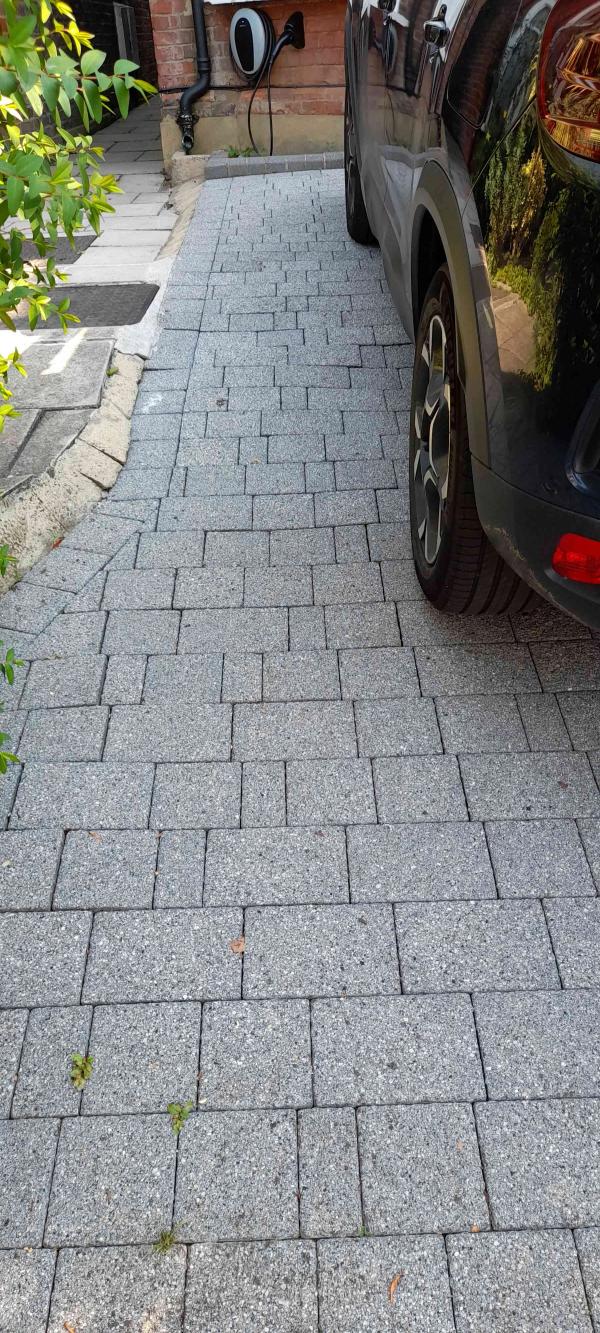
There are several types of permeable surfaces on offer for driveways and front garden parking. Matrix pavers, with gaps for soil and plants, are best. Gravel or loose stones, depending on what’s underneath, can be OK. But a very popular option is “permeable paving”.
This is precast concrete, made to look like stone or brick, but with edges designed to create small gaps between each block. The gaps are intended to let rain percolate into the substrate and soil below. It’s often used by local authorities for pavements and public spaces as part of SUDS (sustainable urban drainage schemes).
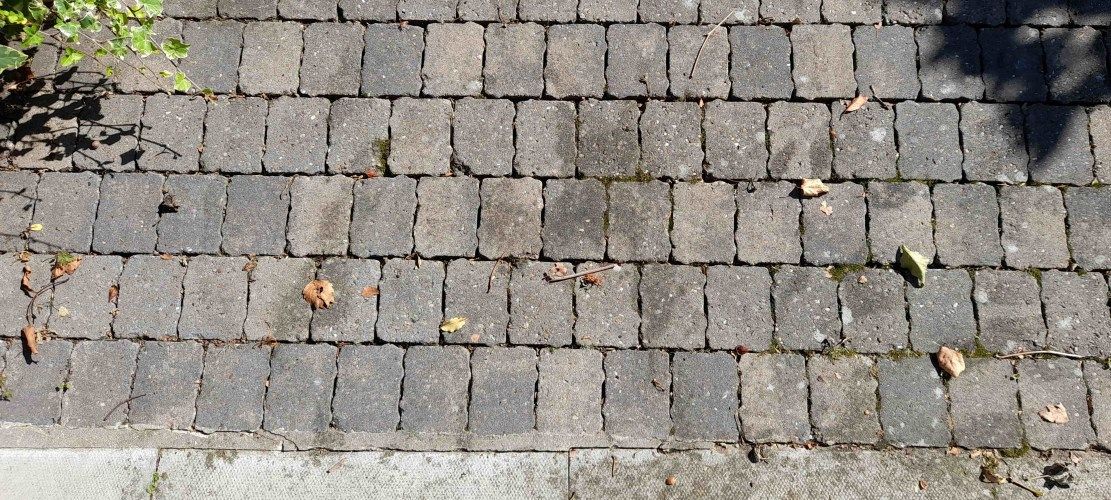
For covering front gardens with hard surfacing, this precast concrete ‘permeable paving’ is popular because it offers a neat and stylish paved look. And, because it’s designed to conform to the government’s weak 2008 regulations on permitted surfaces, no additional “drainage provision”, such as a grille or gap at the edge of the property, is needed.
For over a decade, this type of paving has been heavily promoted as “sustainable drainage” by paving manufacturers and local contractors. Contractors’ leaflets extol its attractiveness and apparent ease of maintenance, and reassure about its claimed permeability. All increasingly pertinent as people seem to want more ‘neat and tidy’ space to park and to charge all their electric vehicles overnight.
How well does it work in the average front garden lost to hard surfacing? Not well. Here’s what happens in practice:
1. Even if correctly installed, the gaps get blocked quite quickly with debris.
2. Moss spores, weed seeds, atmospheric dust and falling leaves, twigs, flower and seed casings from street trees all find their way into the cracks.
3. They are blown and washed in by wind and rain, and pressed in by footfall and vehicles which break up the dry leaves, twigs and casings. This doesn’t take long.
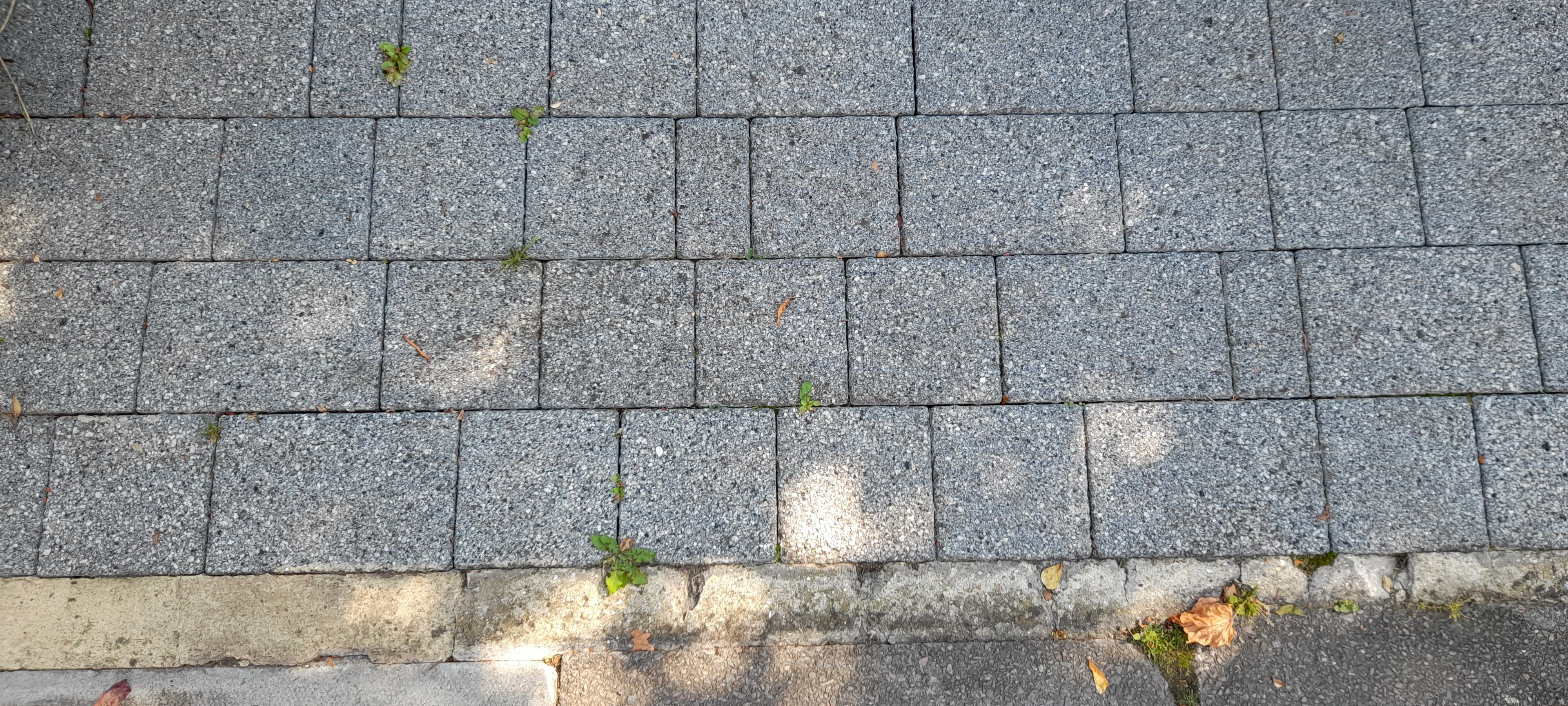
4. This accumulated debris begins to slow the drainage and hold water. This creates a perfect environment for blown-in weed seeds to grow. Weeds excel at growing fast so it’s not long, even if the surface is swept regularly as recommended, before they make their presence felt.
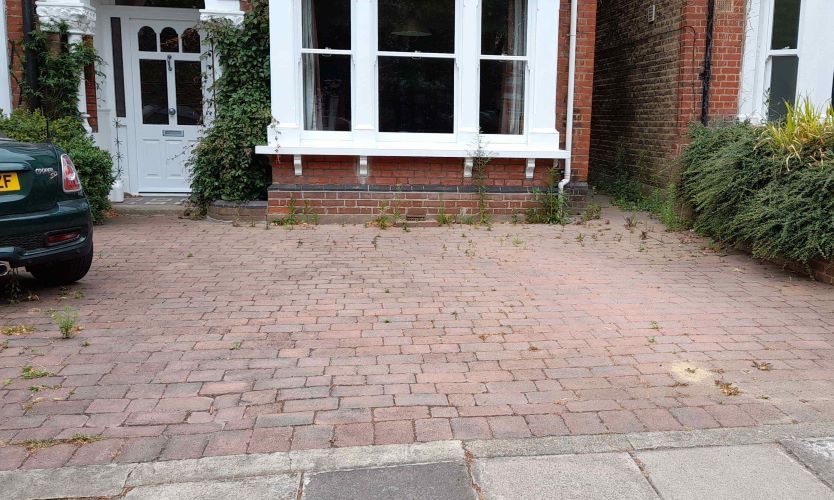
5. Householders then have to decide whether to take action. Ways of dealing with weeds include weedkiller (washing toxins down into the soil), pressure hosing (uses lots of water and drives some debris further into the cracks) and digging out by hand or machine (difficult, time consuming).
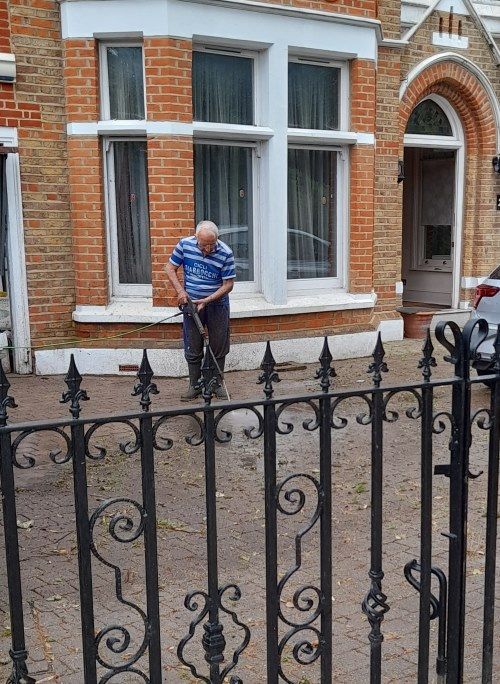

6. These will need doing regularly, because weeds are very good at bouncing back. Resorting to brushing in weed-killing sand or filling the gaps with grout, cement or mortar are not uncommon, but of course block up the gaps and make the paving even less effective at coping with rain.

7. Most householders, despite best intentions, end up realising that it’s a losing battle and just let nature take its course, with perhaps the occasional sweep over or hose down to slow the process and look reasonably presentable – for a while.
So, after a period, which can be several years but can be much less, the claimed ‘permeability’ of this kind of paving is reduced so much that it just can’t absorb prolonged or heavy rain effectively.
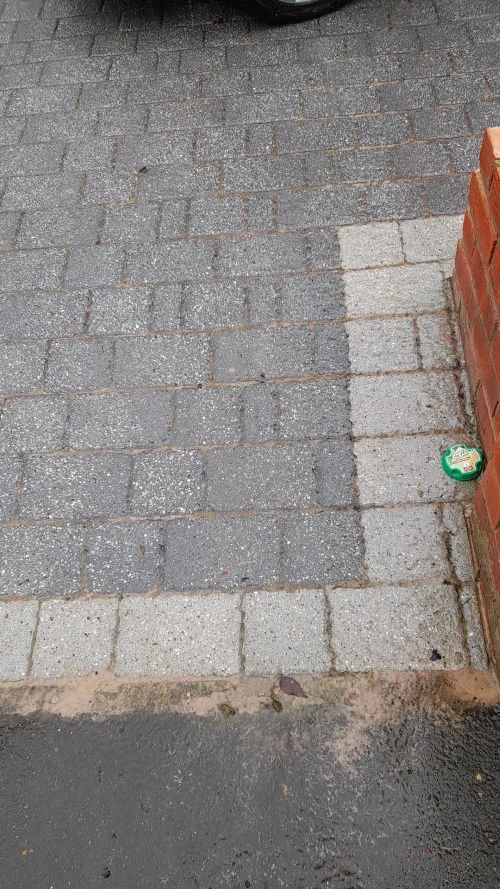
Which means that, in the torrential downpours we are increasingly experiencing linked to climate change, most of the rainwater runs straight off them, across the pavement and into the road and the road drains.
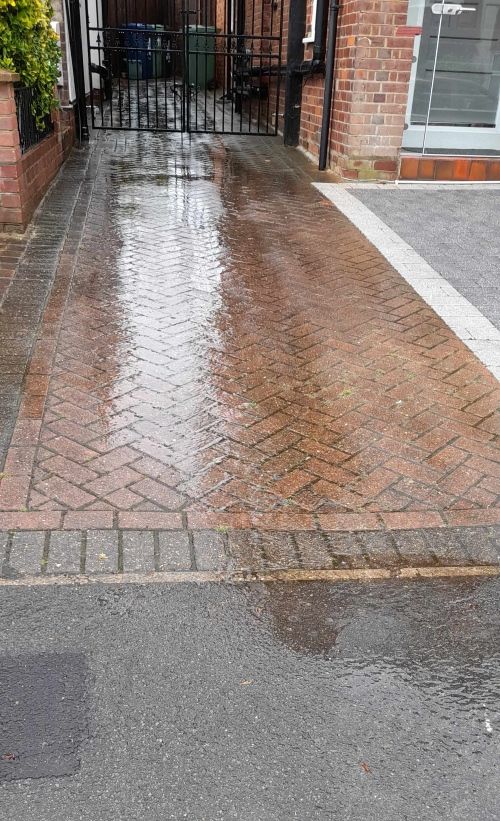
From here it’s a short step to higher risk of local surface water flooding, more pressure on local drains, the sewers and sewage discharges plus more herbicides, microplastics and other pollutants entering local rivers, waterways and groundwaters. All of which costs taxpayers more to clean up.
The manufacturers may claim that accumulated debris slows but doesn’t stop rain soaking away. Maybe so in large, flat places like car parks. But in suburban front gardens, especially if sloping and with trees close by, much of the “permeable paving” put in over the years just gets too blocked to cope with sudden heavy rain.
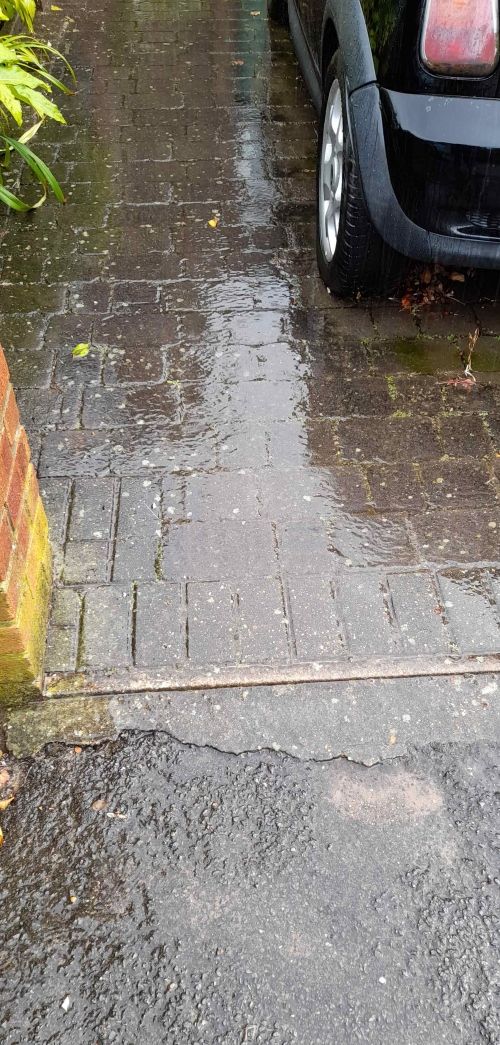
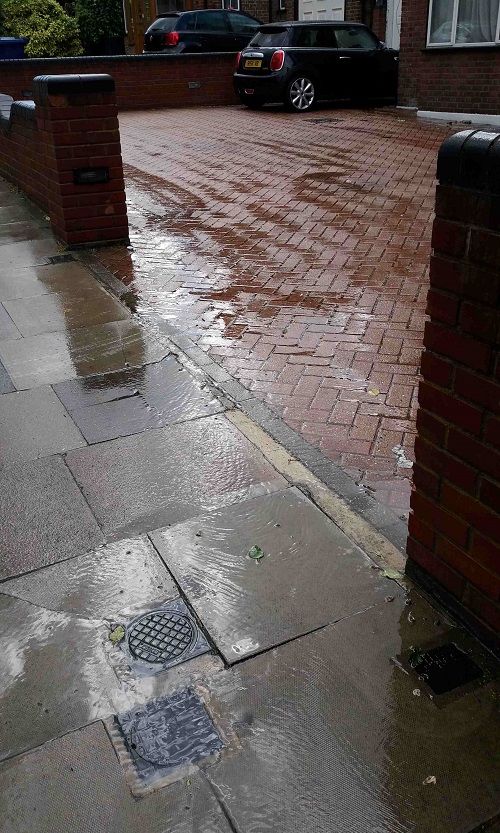
The Government and local authorities need to recognise these realities, as well as the many other reasons why extensive paving in front gardens is making the effects of climate change worse (see “It’s not just flooding”) and adding to the poor state of nature in the UK.
It’s time to overhaul the inadequate regulations to take account of these realities – and to examine the claims of manufacturers and contractors.
